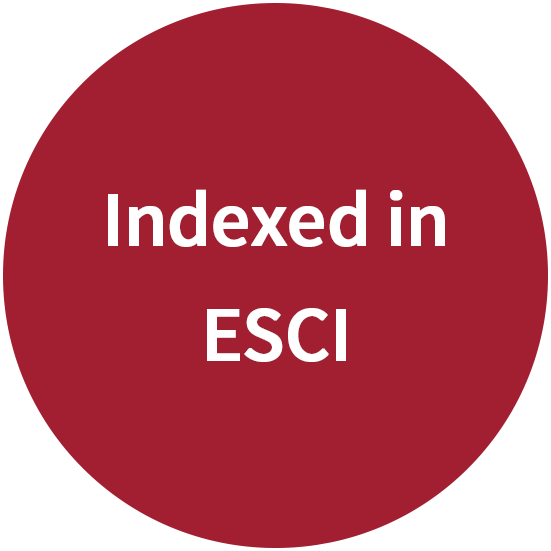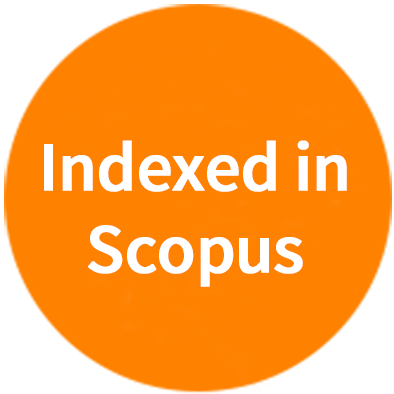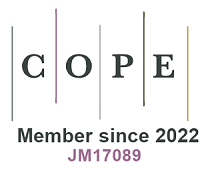REFERENCES
1. Marques ARA, Saftig P. Lysosomal storage disorders - challenges, concepts and avenues for therapy: beyond rare diseases. J Cell Sci 2019;132:jcs221739.
2. Platt FM, d’Azzo A, Davidson BL, Neufeld EF, Tifft CJ. Lysosomal storage diseases. Nat Rev Dis Primers 2018;4:27.
3. Bosch ME, Kielian T. Neuroinflammatory paradigms in lysosomal storage diseases. Front Neurosci 2015;9:417.
4. Donida B, Jacques CED, Mescka CP, et al. Oxidative damage and redox in lysosomal storage disorders: biochemical markers. Clin Chim Acta 2017;466:46-53.
5. Meikle PJ, Hopwood JJ, Clague AE, Carey WF. Prevalence of lysosomal storage disorders. JAMA 1999;281:249-54.
6. Vallance H, Ford J. Carrier testing for autosomal-recessive disorders. Crit Rev Clin Lab Sci 2003;40:473-97.
8. Arvio M, Autio S, Louhiala P. Early clinical symptoms and incidence of aspartylglucosaminuria in Finland. Acta Paediatr 1993;82:587-9.
9. Giugliani R, Federhen A, Michelin-Tirelli K, Riegel M, Burin M. Relative frequency and estimated minimal frequency of lysosomal storage diseases in brazil: report from a reference laboratory. Genet Mol Biol 2017;40:31-9.
11. Beck M. Treatment strategies for lysosomal storage disorders. Dev Med Child Neurol 2018;60:13-8.
12. Thomas R, Kermode AR. Enzyme enhancement therapeutics for lysosomal storage diseases: Current status and perspective. Mol Genet Metab 2019;126:83-97.
13. Coutinho MF, Santos JI, Alves S. Less is more: substrate reduction therapy for lysosomal storage disorders. Int J Mol Sci 2016;17:1065.
14. Bellettato CM, Scarpa M. Possible strategies to cross the blood-brain barrier. Ital J Pediatr 2018;44:131.
15. Kantor B, Bailey RM, Wimberly K, Kalburgi SN, Gray SJ. Methods for gene transfer to the central nervous system. Adv Genet 2014;87:125-97.
16. Sevin C, Deiva K. Clinical trials for gene therapy in lysosomal diseases with cns involvement. Front Mol Biosci 2021;8:624988.
17. Salegio EA, Samaranch L, Kells AP, et al. Axonal transport of adeno-associated viral vectors is serotype-dependent. Gene Ther 2013;20:348-52.
18. Castle MJ, Perlson E, Holzbaur EL, Wolfe JH. Long-distance axonal transport of AAV9 is driven by dynein and kinesin-2 and is trafficked in a highly motile Rab7-positive compartment. Mol Ther 2014;22:554-66.
19. Green F, Samaranch L, Zhang HS, et al. Axonal transport of AAV9 in nonhuman primate brain. Gene Ther 2016;23:520-6.
20. Ziegler RJ, Salegio EA, Dodge JC, et al. Distribution of acid sphingomyelinase in rodent and non-human primate brain after intracerebroventricular infusion. Exp Neurol 2011;231:261-71.
21. Pastores GM, Maegawa GH. Clinical neurogenetics: neuropathic lysosomal storage disorders. Neurol Clin 2013;31:1051-71.
22. Wraith JE, Clarke LA, Beck M, et al. Enzyme replacement therapy for mucopolysaccharidosis I: a randomized, double-blinded, placebo-controlled, multinational study of recombinant human alpha-L-iduronidase (laronidase). J Pediatr 2004;144:581-8.
23. Bellettato CM, Scarpa M. Pathophysiology of neuropathic lysosomal storage disorders. J Inherit Metab Dis 2010;33:347-62.
25. Aflaki E, Stubblefield BK, Maniwang E, et al. Macrophage models of Gaucher disease for evaluating disease pathogenesis and candidate drugs. Sci Transl Med 2014;6:240ra73.
26. Henry B, Ziobro R, Becker KA, Kolesnick R, Gulbins E. Acid sphingomyelinase. Handb Exp Pharmacol ;2013:77-88.
27. McGovern MM, Aron A, Brodie SE, Desnick RJ, Wasserstein MP. Natural history of Type A Niemann-Pick disease: possible endpoints for therapeutic trials. Neurology 2006;66:228-32.
28. McGovern MM, Lippa N, Bagiella E, et al. Morbidity and mortality in type B Niemann-Pick disease. Genet Med 2013;15:618-23.
29. Pick L. Niemann-Pick’s Disease and Other Forms of so-Called Xanthomatosis. Am J Med Sci 1933;185:615-16. Available from: https://onlinebooks.library.upenn.edu/webbin/serial?id=amjmedsci[Last accessed on 1 Apr 2022].
30. Desnick RJ, Ioannou YA, Eng CM, et al. The metabolic and molecular bases of inherited disease CD-ROM. Mol Pathol 1997;50:279. Available from:
31. Takahashi T, Desnick RJ, Takada G, Schuchman EH. Identification of a missense mutation (S436R) in the acid sphingomyelinase gene from a Japanese patient with type B Niemann-Pick disease. Hum Mutat 1992;1:70-1.
32. Diaz GA, Jones SA, Scarpa M, et al. One-year results of a clinical trial of olipudase alfa enzyme replacement therapy in pediatric patients with acid sphingomyelinase deficiency. Genet Med 2021;23:1543-50.
33. Wasserstein MP, Diaz GA, Lachmann RH, et al. Olipudase alfa for treatment of acid sphingomyelinase deficiency (ASMD): safety and efficacy in adults treated for 30 months. J Inherit Metab Dis 2018;41:829-38.
34. Samaranch L, Pérez-Cañamás A, Soto-Huelin B, et al. Adeno-associated viral vector serotype 9-based gene therapy for Niemann-Pick disease type A. Sci Transl Med 2019;11:eaat3738.
35. Ioannou YA, Zeidner KM, Gordon RE, Desnick RJ. Fabry disease: preclinical studies demonstrate the effectiveness of alpha-galactosidase A replacement in enzyme-deficient mice. Am J Hum Genet 2001;68:14-25.
36. Martins AM, D’Almeida V, Kyosen SO, et al. Guidelines to diagnosis and monitoring of Fabry disease and review of treatment experiences. J Pediatr 2009;155:S19-31.
38. Staretz-Chacham O, Choi JH, Wakabayashi K, Lopez G, Sidransky E. Psychiatric and behavioral manifestations of lysosomal storage disorders. Am J Med Genet B Neuropsychiatr Genet 2010;153B:1253-65.
39. Hurowitz GI, Silver JM, Brin MF, Williams DT, Johnson WG. Neuropsychiatric aspects of adult-onset Tay-Sachs disease: two case reports with several new findings. J Neuropsychiatry Clin Neurosci 1993;5:30-6.
40. Gieselmann V, Matzner U, Hess B, et al. Metachromatic leukodystrophy: Molecular genetics and an animal model. J Inherit Metab Dis 1998;21:564-74.
41. Wraith JE, Baumgartner MR, Bembi B, et al. NP-C Guidelines Working Group. Recommendations on the diagnosis and management of Niemann-Pick disease type C. Mol Genet Metab 2009;98:152-65.
42. Sévin M, Lesca G, Baumann N, et al. The adult form of Niemann-Pick disease type C. Brain 2007;130:120-33.
43. Wang RY, Bodamer OA, Watson MS, Wilcox WR. ACMG Work Group on Diagnostic Confirmation of Lysosomal Storage Diseases. Lysosomal storage diseases: diagnostic confirmation and management of presymptomatic individuals. Genet Med 2011;13:457-84.
44. Mokhtariye A, Hagh-Nazari L, Varasteh AR, Keyfi F. Diagnostic methods for lysosomal storage disease. Rep Biochem Mol Biol 2019;7:119-28[Last accessed on 1 Apr 2022].
45. Hawkins AK, Ho A. Genetic counseling and the ethical issues around direct to consumer genetic testing. J Genet Couns 2012;21:367-73.
46. Filocamo M, Morrone A. Lysosomal storage disorders: molecular basis and laboratory testing. Hum Genomics 2011;5:156-69.
47. Sista RS, Wang T, Wu N, et al. Multiplex newborn screening for pompe, Fabry, hunter, Gaucher, and hurler diseases using a digital microfluidic platform. Clin Chim Acta 2013;424:12-8.
48. Hwu WL, Chien YH, Lee NC, et al. Newborn screening for fabry disease in taiwan reveals a high incidence of the later - onset GLA mutation c. 936+ 919G> A (IVS4 + 919G > A). Hum mutat 2009;30:1397-1405. Available from:
49. Kasper DC, Herman J, De Jesus VR, Mechtler TP, Metz TF, Shushan B. The application of multiplexed, multi-dimensional ultra-high-performance liquid chromatography/tandem mass spectrometry to the high-throughput screening of lysosomal storage disorders in newborn dried bloodspots. Rapid Commun Mass Spectrom 2010;24:986-94.
50. Zhang XK, Elbin CS, Chuang WL, et al. Multiplex enzyme assay screening of dried blood spots for lysosomal storage disorders by using tandem mass spectrometry. Clin Chem 2008;54:1725-8.
51. Winchester B, Bali D, Bodamer OA, et al. Pompe Disease Diagnostic Working Group. Methods for a prompt and reliable laboratory diagnosis of pompe disease: report from an international consensus meeting. Mol Genet Metab 2008;93:275-81.
52. Valle DL, Antonarakis S, Ballabio A, Beaudet AL, Mitchell GA. The Online Metabolic and Molecular Bases of Inherited Disease. Available from: https://ommbid.mhmedical.com/book.aspx?bookID=2709 [Last accessed on 1 Apr 2022].
53. Giugliani R, Brusius-Facchin AC, Pasqualim G, et al. Current molecular genetics strategies for the diagnosis of lysosomal storage disorders. Expert Rev Mol Diagn 2016;16:113-23.
55. Hadzsiev K, Komlosi K, Czako M, et al. Kleefstra syndrome in Hungarian patients: additional symptoms besides the classic phenotype. Mol Cytogenet 2016;9:22.
56. Hoffman JD, Greger V, Strovel ET, et al. Next-generation DNA sequencing of HEXA: a step in the right direction for carrier screening. Mol Genet Genomic Med 2013;1:260-8.
57. Yoshida S, Kido J, Matsumoto S, et al. Prenatal diagnosis of Gaucher disease using next-generation sequencing. Pediatr Int 2016;58:946-9.
58. Cognata V, Guarnaccia M, Polizzi A, Ruggieri M, Cavallaro S. Highlights on Genomics Applications for Lysosomal Storage Diseases. Cells 2020;9:1902.
59. O’rourke E, Laney D, Morgan C, Mooney K, Sullivan J. Genetic counseling for lysosomal storage diseases. Lysosomal Storage Disorders. Boston: Springer US; 2007. p. 179-95.
60. Kaback M, Lim-Steele J, Dabholkar D, et al. Tay-sachs disease - carrier screening, prenatal diagnosis, and the molecular era. an international perspective, 1970 to 1993. the international TSD data collection network. JAMA 1993;270:2307-15.
61. Gross SJ, Pletcher BA, Monaghan KG. Professional Practice and Guidelines Committee. Carrier screening in individuals of Ashkenazi Jewish descent. Genet Med 2008;10:54-6.
62. Baskovich B, Hiraki S, Upadhyay K, et al. Expanded genetic screening panel for the Ashkenazi Jewish population. Genet Med 2016;18:522-8.
64. Lund TC. Hematopoietic stem cell transplant for lysosomal storage diseases. Pediatr Endocrinol Rev 2013;11 Suppl 1:91-8.
65. Aldenhoven M, Wynn RF, Orchard PJ, et al. Long-term outcome of Hurler syndrome patients after hematopoietic cell transplantation: an international multicenter study. Blood 2015;125:2164-72.
66. Prasad VK, Kurtzberg J. Cord blood and bone marrow transplantation in inherited metabolic diseases: scientific basis, current status and future directions. Br J Haematol 2010;148:356-72.
67. Parenti G, Pignata C, Vajro P, Salerno M. New strategies for the treatment of lysosomal storage diseases (review). Int J Mol Med 2013;31:11-20.
68. Muenzer J, Wraith JE, Clarke LA. International Consensus Panel on Management and Treatment of Mucopolysaccharidosis I. Mucopolysaccharidosis I: management and treatment guidelines. Pediatrics 2009;123:19-29.
69. Lum SH, Stepien KM, Ghosh A, et al. Long term survival and cardiopulmonary outcome in children with Hurler syndrome after haematopoietic stem cell transplantation. J Inherit Metab Dis 2017;40:455-60.
70. Prasad VK, Kurtzberg J. Transplant outcomes in mucopolysaccharidoses. Semin Hematol 2010;47:59-69.
71. Mhanni AA, Auray-Blais C, Boutin M, et al. Therapeutic challenges in two adolescent male patients with Fabry disease and high antibody titres. Mol Genet Metab Rep 2020;24:100618.
72. Desai AK, Rosenberg AS, Kishnani PS. The potential impact of timing of IVIG administration on the efficacy of rituximab for immune tolerance induction for patients with Pompe disease. Clin Immunol 2020;219:108541.
73. Kishnani PS, Dickson PI, Muldowney L, et al. Immune response to enzyme replacement therapies in lysosomal storage diseases and the role of immune tolerance induction. Mol Genet Metab 2016;117:66-83.
74. Messinger YH, Mendelsohn NJ, Rhead W, et al. Successful immune tolerance induction to enzyme replacement therapy in CRIM-negative infantile Pompe disease. Genet Med 2012;14:135-42.
75. Lachmann RH. Enzyme replacement therapy for lysosomal storage diseases. Curr Opin Pediatr 2011;23:588-93.
76. Platt FM, Jeyakumar M, Andersson U, Heare T, Dwek RA, Butters TD. Substrate reduction therapy in mouse models of the glycosphingolipidoses. Philos Trans R Soc Lond B Biol Sci 2003;358:947-54.
77. Wenger DA, Coppola S, Liu SL. Insights into the diagnosis and treatment of lysosomal storage diseases. Arch Neurol 2003;60:322-8.
79. Fecarotta S, Romano A, Della Casa R, et al. Long term follow-up to evaluate the efficacy of miglustat treatment in Italian patients with Niemann-Pick disease type C. Orphanet J Rare Dis 2015;10:22.
80. Peterschmitt MJ, Cox GF, Ibrahim J, et al. A pooled analysis of adverse events in 393 adults with Gaucher disease type 1 from four clinical trials of oral eliglustat: Evaluation of frequency, timing, and duration. Blood Cells Mol Dis 2018;68:185-91.
81. Larsen SD, Wilson MW, Abe A, et al. Property-based design of a glucosylceramide synthase inhibitor that reduces glucosylceramide in the brain. J Lipid Res 2012;53:282-91.
82. Marshall J, Ashe KM, Bangari D, et al. Substrate reduction augments the efficacy of enzyme therapy in a mouse model of Fabry disease. PLoS One 2010;5:e15033.
83. Gabig-Cimińska M, Jakóbkiewicz-Banecka J, Malinowska M, et al. Combined Therapies for Lysosomal Storage Diseases. Curr Mol Med 2015;15:746-71.
84. Hinderer C, Bell P, Gurda BL, et al. Intrathecal gene therapy corrects CNS pathology in a feline model of mucopolysaccharidosis I. Mol Ther 2014;22:2018-27.
85. Gilkes JA, Bloom MD, Heldermon CD. Preferred transduction with AAV8 and AAV9 via thalamic administration in the MPS IIIB model: A comparison of four rAAV serotypes. Mol Genet Metab Rep 2016;6:48-54.
86. Liu G, Chen YH, He X, et al. Adeno-associated virus type 5 reduces learning deficits and restores glutamate receptor subunit levels in MPS VII mice CNS. Mol Ther 2007;15:242-7.
87. Lin DS, Hsiao CD, Lee AY, et al. Mitigation of cerebellar neuropathy in globoid cell leukodystrophy mice by AAV-mediated gene therapy. Gene 2015;571:81-90.
88. Miyake N, Miyake K, Asakawa N, Yamamoto M, Shimada T. Long-term correction of biochemical and neurological abnormalities in MLD mice model by neonatal systemic injection of an AAV serotype 9 vector. Gene Ther 2014;21:427-33.
89. Cain JT, Likhite S, White KA, et al. Gene therapy corrects brain and behavioral pathologies in CLN6-batten disease. Mol Ther 2019;27:1836-47.
90. Weismann CM, Ferreira J, Keeler AM, et al. Systemic AAV9 gene transfer in adult GM1 gangliosidosis mice reduces lysosomal storage in CNS and extends lifespan. Hum Mol Genet 2015;24:4353-64.
91. Snyder BR, Gray SJ, Quach ET, et al. Comparison of adeno-associated viral vector serotypes for spinal cord and motor neuron gene delivery. Hum Gene Ther 2011;22:1129-35.
92. Ohno K, Samaranch L, Hadaczek P, et al. Kinetics and MR-based monitoring of AAV9 vector delivery into cerebrospinal fluid of nonhuman primates. Mol Ther Methods Clin Dev 2019;13:47-54.
93. Foust KD, Nurre E, Montgomery CL, et al. Intravascular AAV9 preferentially targets neonatal neurons and adult astrocytes. Nat Biotechnol 2009;27:59-65.
94. Samaranch L, Salegio EA, San Sebastian W, et al. Adeno-associated virus serotype 9 transduction in the central nervous system of nonhuman primates. Hum Gene Ther 2012;23:382-9.
95. Van Alstyne M, Tattoli I, Delestrée N, et al. Gain of toxic function by long-term AAV9-mediated SMN overexpression in the sensorimotor circuit. Nat Neurosci 2021;24:930-40.
96. Hinderer C, Katz N, Buza EL, et al. Severe toxicity in nonhuman primates and piglets following high-dose intravenous administration of an adeno-associated virus vector expressing human SMN. Hum Gene Ther 2018;29:285-98.
97. Samaranch L, Salegio EA, San Sebastian W, et al. Strong cortical and spinal cord transduction after AAV7 and AAV9 delivery into the cerebrospinal fluid of nonhuman primates. Hum Gene Ther 2013;24:526-32.
98. Hordeaux J, Buza EL, Dyer C, et al. Adeno-associated virus-induced dorsal root ganglion pathology. Human Gene Therapy 2020;31:808-18.
99. Ciesielska A, Mittermeyer G, Hadaczek P, et al. Anterograde axonal transport of AAV2-GDNF in rat basal ganglia. Mol Ther 2011;19:922-7.
100. Bobo RH, Laske DW, Akbasak A, et al. Convection-enhanced delivery of macromolecules in the brain. Proc Natl Acad Sci U S A 1994;91:2076-80.
101. Morrison PF, Chen MY, Chadwick RS, Lonser RR, Oldfield EH. Focal delivery during direct infusion to brain: role of flow rate, catheter diameter, and tissue mechanics. Am J Physiol 1999;277:R1218-29.
102. Gonzalez EA, Baldo G. Gene therapy for lysosomal storage disorders: recent advances and limitations. J. inborn errors metab 2017;5:232640981668978.
103. Baldo G, Giugliani R, Matte U. Gene delivery strategies for the treatment of mucopolysaccharidoses. Expert Opin Drug Deliv 2014;11:449-59.
104. Sevin C, Benraiss A, Van Dam D, et al. Intracerebral adeno-associated virus-mediated gene transfer in rapidly progressive forms of metachromatic leukodystrophy. Hum Mol Genet 2006;15:53-64.
105. Liu G, Martins I, Wemmie JA, Chiorini JA, Davidson BL. Functional correction of CNS phenotypes in a lysosomal storage disease model using adeno-associated virus type 4 vectors. J Neurosci 2005;25:9321-7.
106. Cressant A, Desmaris N, Verot L, et al. Improved behavior and neuropathology in the mouse model of Sanfilippo type IIIB disease after adeno-associated virus-mediated gene transfer in the striatum. J Neurosci 2004;24:10229-39.
107. Skorupa AF, Fisher KJ, Wilson JM, Parente MK, Wolfe JH. Sustained production of beta-glucuronidase from localized sites after AAV vector gene transfer results in widespread distribution of enzyme and reversal of lysosomal storage lesions in a large volume of brain in mucopolysaccharidosis VII mice. Exp Neurol 1999;160:17-27.
108. Brooks AI, Stein CS, Hughes SM, et al. Functional correction of established central nervous system deficits in an animal model of lysosomal storage disease with feline immunodeficiency virus-based vectors. Proc Natl Acad Sci U S A 2002;99:6216-21.
109. Ciron C, Desmaris N, Colle MA, et al. Gene therapy of the brain in the dog model of Hurler’s syndrome. Ann Neurol 2006;60:204-13.
110. Katz ML, Tecedor L, Chen Y, et al. AAV gene transfer delays disease onset in a TPP1-deficient canine model of the late infantile form of Batten disease. Sci Transl Med 2015;7:313ra180.
111. Pastores GM, Torres PA, Zeng BJ. Animal models for lysosomal storage disorders. Biochemistry (Mosc) 2013;78:721-5.
112. Deverman BE, Pravdo PL, Simpson BP, et al. Cre-dependent selection yields AAV variants for widespread gene transfer to the adult brain. Nat Biotechnol 2016;34:204-9.
113. Chan KY, Jang MJ, Yoo BB, et al. Engineered AAVs for efficient noninvasive gene delivery to the central and peripheral nervous systems. Nat Neurosci 2017;20:1172-9.
114. Davidsson M, Wang G, Aldrin-Kirk P, et al. A systematic capsid evolution approach performed in vivo for the design of AAV vectors with tailored properties and tropism. Proc Natl Acad Sci U S A ;2019:27053-62.
115. Liu Q, Segal DJ, Ghiara JB, Barbas CF 3rd. Design of polydactyl zinc-finger proteins for unique addressing within complex genomes. Proc Natl Acad Sci U S A 1997;94:5525-30.
116. Anguela XM, Sharma R, Doyon Y, et al. Robust ZFN-mediated genome editing in adult hemophilic mice. Blood 2013;122:3283-7.
117. Li H, Haurigot V, Doyon Y, et al. In vivo genome editing restores haemostasis in a mouse model of haemophilia. Nature 2011;475:217-21.
118. Sharma R, Anguela XM, Doyon Y, et al. In vivo genome editing of the albumin locus as a platform for protein replacement therapy. Blood 2015;126:1777-84.
119. Laoharawee K, DeKelver RC, Podetz-Pedersen KM, et al. Dose-dependent prevention of metabolic and neurologic disease in murine MPS II by ZFN-mediated in vivo genome editing. Mol Ther 2018;26:1127-36.
120. Ou L, DeKelver RC, Rohde M, et al. ZFN-mediated in vivo genome editing corrects murine hurler syndrome. Mol Ther 2019;27:178-87.
121. Jinek M, Chylinski K, Fonfara I, et al. A programmable dual-RNA-guided DNA endonuclease in adaptive bacterial immunity. Science 2012;337:816-21.
122. Broeders M, Herrero-Hernandez P, Ernst MPT, van der Ploeg AT, Pijnappel WWMP. Sharpening the molecular scissors: advances in gene-editing technology. iScience 2020;23:100789.
123. Ou L, Przybilla MJ, Ahlat O, et al. A Highly efficacious ps gene editing system corrects metabolic and neurological complications of mucopolysaccharidosis type I. Mol Ther 2020;28:1442-54.
124. Ou L, Przybilla MJ, Tăbăran AF, et al. A novel gene editing system to treat both Tay-Sachs and Sandhoff diseases. Gene Ther 2020;27:226-36.
125. Levy JM, Yeh WH, Pendse N, et al. Cytosine and adenine base editing of the brain, liver, retina, heart and skeletal muscle of mice via adeno-associated viruses. Nat Biomed Eng 2020;4:97-110.
126. Böckenhoff A, Cramer S, Wölte P, et al. Comparison of five peptide vectors for improved brain delivery of the lysosomal enzyme arylsulfatase A. J Neurosci 2014;34:3122-9.
127. Zhou QH, Boado RJ, Lu JZ, Hui EK, Pardridge WM. Brain-penetrating IgG-iduronate 2-sulfatase fusion protein for the mouse. Drug Metab Dispos 2012;40:329-35.
128. Salvalaio M, Rigon L, Belletti D, et al. Targeted polymeric nanoparticles for brain delivery of high molecular weight molecules in lysosomal storage disorders. PLoS One 2016;11:e0156452.
129. Tancini B, Tosi G, Bortot B, et al. Use of polylactide-co-glycolide-nanoparticles for lysosomal delivery of a therapeutic enzyme in glycogenosis type II fibroblasts. J Nanosci Nanotechnol 2015;15:2657-66.
130. Nguyen QH, Witt RG, Wang B, et al. Tolerance induction and microglial engraftment after fetal therapy without conditioning in mice with Mucopolysaccharidosis type VII. Sci Transl Med 2020;12:eaay8980.
131. Nijagal A, Flake AW, MacKenzie TC. In utero hematopoietic cell transplantation for the treatment of congenital anomalies. Clin Perinatol 2012;39:301-10.
132. Derderian SC, Jeanty C, Walters MC, Vichinsky E, MacKenzie TC. In utero hematopoietic cell transplantation for hemoglobinopathies. Front Pharmacol 2014;5:278.
133. Ito H, Shiwaku H, Yoshida C, et al. In utero gene therapy rescues microcephaly caused by Pqbp1-hypofunction in neural stem progenitor cells. Mol Psychiatry 2015;20:459-71.
134. Massaro G, Mattar CNZ, Wong AMS, et al. Fetal gene therapy for neurodegenerative disease of infants. Nat Med 2018;24:1317-23.
135. Rashnonejad A, Amini Chermahini G, Gündüz C, et al. Fetal gene therapy using a single injection of recombinant AAV9 rescued SMA phenotype in mice. Mol Ther 2019;27:2123-33.
136. Shangaris P, Loukogeorgakis SP, Subramaniam S, et al. In utero gene therapy (IUGT) using GLOBE lentiviral vector phenotypically corrects the heterozygous humanised mouse model and its progress can be monitored using MRI techniques. Sci Rep 2019;9:11592.








